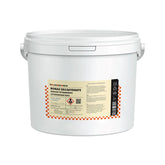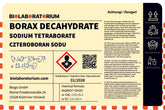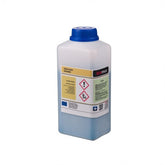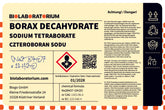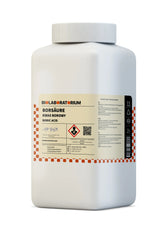Aluminium borate – Important inorganic compounds in materials chemistry and catalysis
Aluminum borates are a fascinating class of inorganic compounds that play an important role in a variety of applications in materials chemistry and catalysis. These crystalline compounds, built from aluminum atoms and borate groups, are characterized by their unique structural and chemical properties that make them valuable tools in modern research and industry.
Structure and Properties of Aluminum Borates
Aluminum borates, chemically denoted as AlBO₃, consist of aluminum atoms tetrahedrally surrounded by oxygen atoms. These tetrahedra are linked via shared oxygen atoms with borate groups, resulting in a complex three-dimensional crystal structure. This structure imparts a series of interesting properties to aluminum borates:
- Thermal Stability: Aluminum borates are high-melting materials with melting points well above 1000°C, making them suitable for high-temperature applications.
- Chemical Resistance: They are resistant to many acids, bases, and other aggressive chemicals, enabling their use in corrosive environments.
- Crystalline Structure: The ordered crystal structure of aluminum borates results in interesting optical, electrical, and magnetic properties that can be utilized for various technological applications.
Applications in Materials Chemistry
Due to these unique properties, aluminum borates find diverse applications in materials chemistry:
Ceramic Materials
Aluminum borates are used as additives in ceramic materials such as bricks, refractory products, and technical ceramics. They improve the thermal stability, mechanical strength, and chemical resistance of these materials.
Glasses and Glass Ceramics
In glass manufacturing, aluminum borates serve as melting point lowering additives that regulate the viscosity of the glass melt and can promote crystallization. This enables the production of special glass ceramics with unique properties.
Catalysts
The crystal structure and chemical composition of aluminum borates make them excellent support materials for heterogeneous catalysts. Here they can significantly improve the activity, selectivity, and stability of the catalysts.
Aluminum Borates in Catalysis
In addition to their importance in materials chemistry, aluminum borates also play an important role in catalysis research and application:
Heterogeneous Catalysts
As mentioned earlier, aluminum borates serve as support materials for a variety of heterogeneous catalysts. The high specific surface area, pore structure, and the possibility of incorporating active sites in a targeted manner make them ideal catalyst supports.
Acid-Base Catalysis
The acidity and basicity of the aluminum borate surface can be adjusted through targeted modifications. This allows for the development of acidic or basic catalysts for various reactions, such as the synthesis of organic fine chemicals.
Oxidation/Reduction Catalysis
Due to their chemical stability, aluminum borates can also be used as supports for redox-active catalysts, such as noble metal catalysts. These find application in processes like exhaust gas aftertreatment or energy conversion.
Research and Development on Aluminum Borates
The diverse application possibilities of aluminum borates make them an intensively researched topic in inorganic materials chemistry and catalysis research. Current research fields include, among others:
New Synthesis Routes
Scientists continuously work on developing new energy- and resource-efficient synthesis methods for aluminum borates to optimize their production.
Structural Modifications
Through targeted substitutions of aluminum or borate groups, the properties of aluminum borates can be specifically adjusted and improved.
Nanostructured Materials
The production of aluminum borates in nanoform opens up new possibilities for utilizing their surface and interface properties for catalytic applications.
Computer-Aided Materials Development
Modern simulation methods enable a deeper understanding of structure-property relationships in aluminum borates, thereby supporting the targeted development of new material variants.
Conclusion
Aluminum borates are fascinating inorganic compounds that play an important role in various applications in materials chemistry and catalysis due to their unique structural and chemical properties. From ceramic materials to glasses and highly efficient catalysts – the versatility of these materials is impressive. With continuous research and development on new synthesis routes, structural modifications, and nanostructured variants, aluminum borates will certainly continue to hold an important position in modern materials science and catalysis chemistry.

